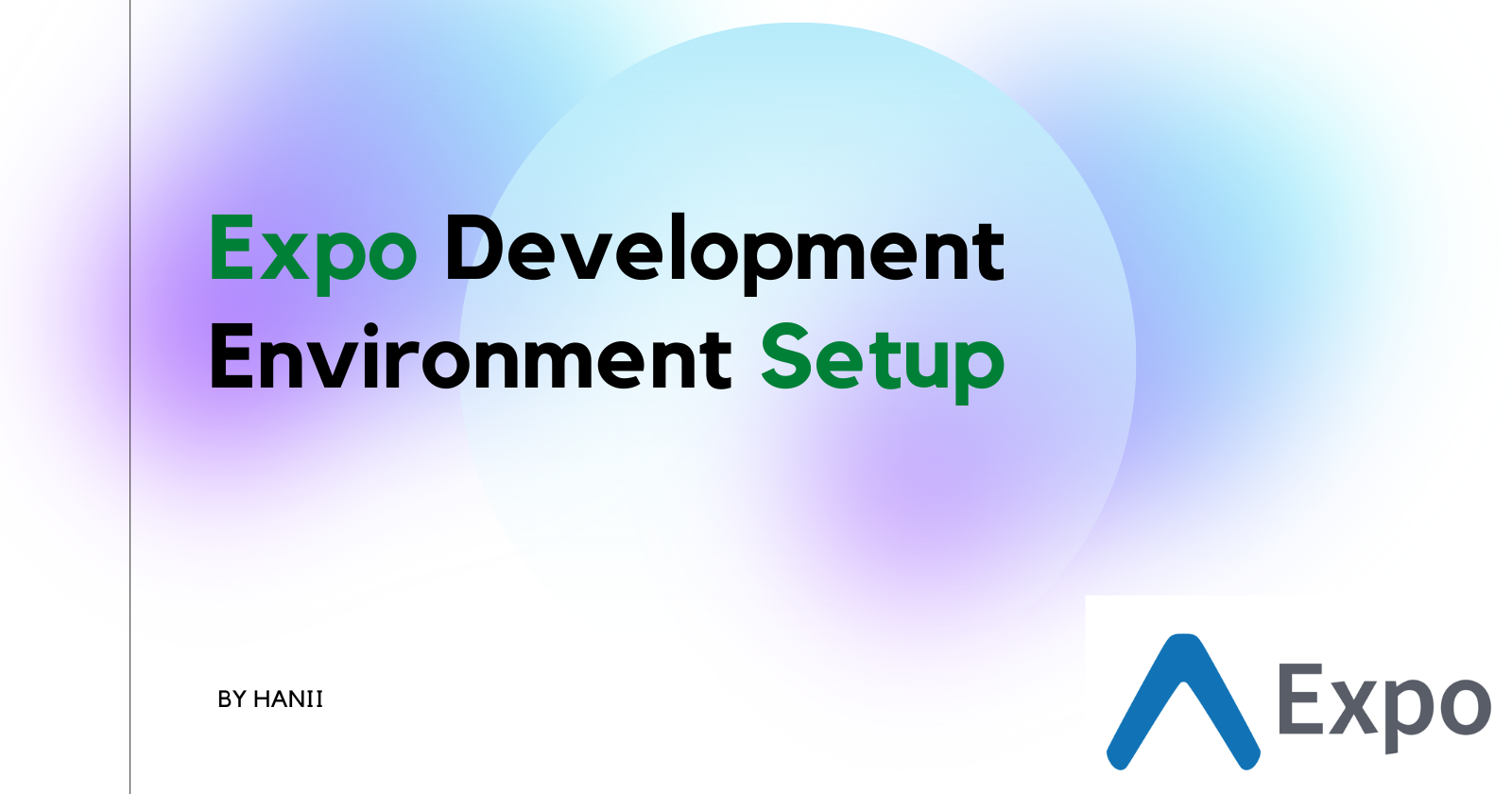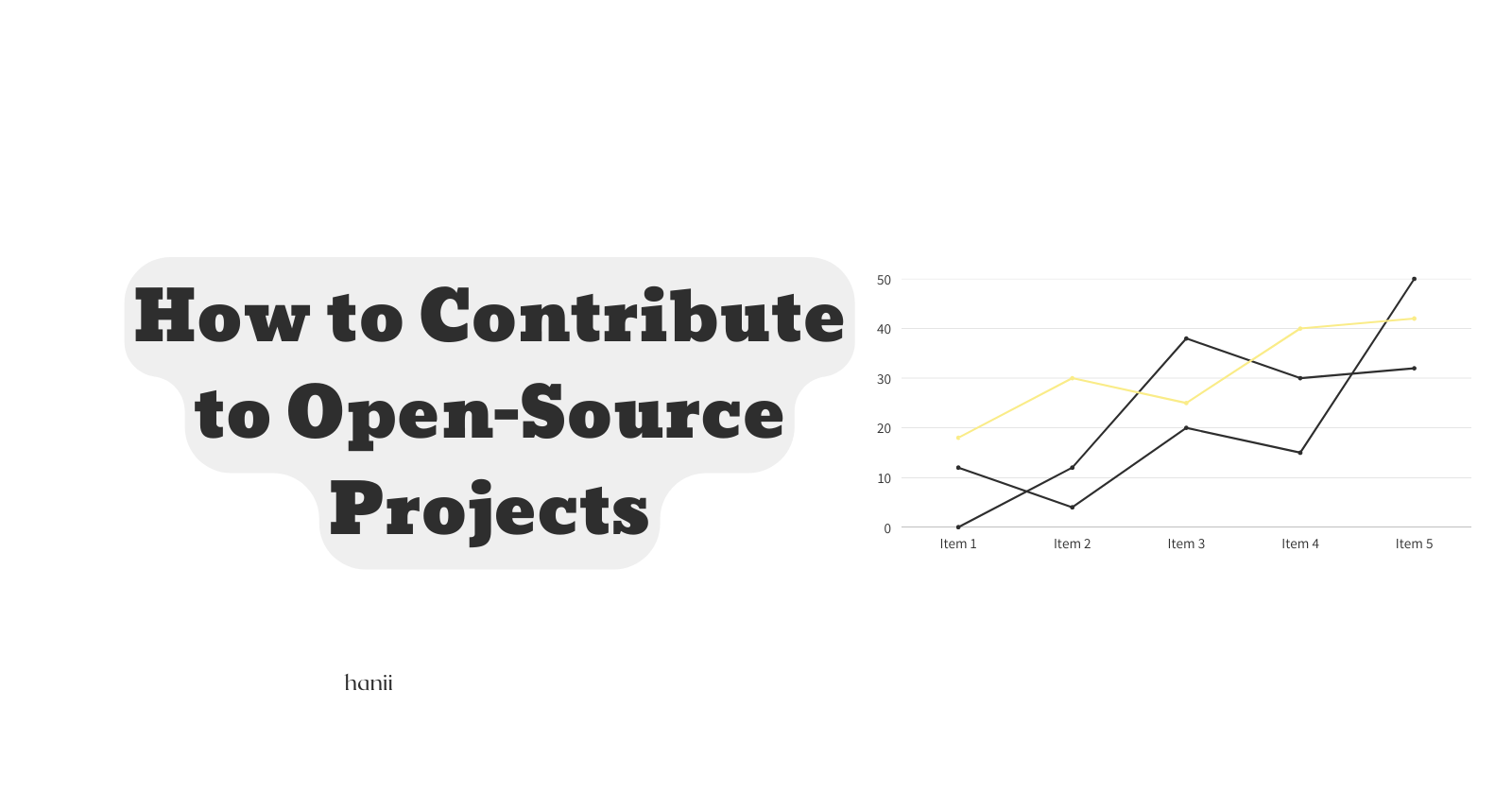Introduction
In general, there are two ways to get started with React Native - using Expo CLI or React Native CLI. Both ways have their own strengths and weaknesses but even React Native's official documentation is suggesting to get started with Expo CLI if you are new to mobile development. Therefore, in this guide we will go through all the steps needed to setup Expo development environment for your first React Native project using Windows.
If you chose to follow the guide, then let's roll!
Installing Windows Terminal
First and foremost we need to install Windows Terminal (later: terminal) if you don't have one as it is going to be used quite often. To do this you can use Microsoft Store by searching "Windows Terminal" and installing it.
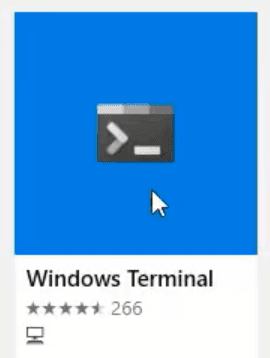
After installing and launching it, you can test if everything works by typing ls in the terminal, which should display the list of files and folders in that path.
Installing Git
Git is going to be used for source control management, which will help us to track changes in the code and make development easier. Also, Git comes with Git Bash that we will make use of.
To download the latest version of Git you can go to their website and select Windows OS. Once the download is complete, we can start the installation process.
On the first window we can read GNU General Public License and click Next button. But let's be honest, nobody reads that, so you can click Next right away.
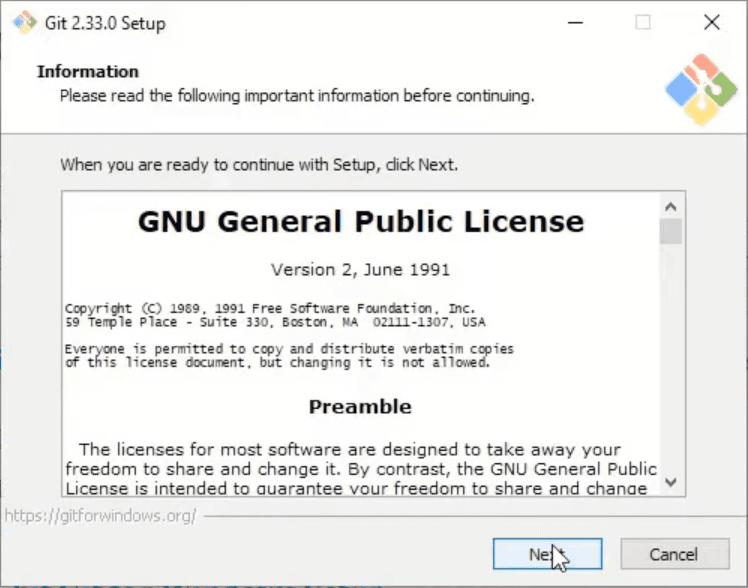
In the next window you should select the path that you want Git to be installed in and click Next.
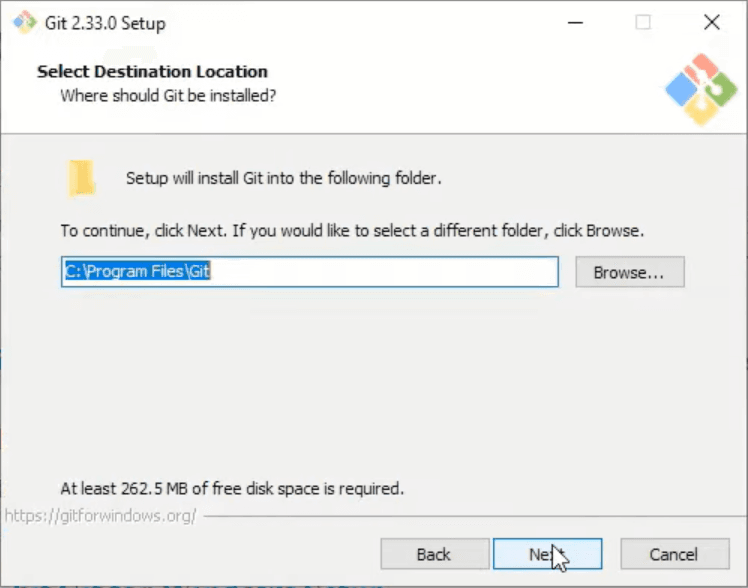
Now in this window I would suggest checking 'Add a Git Bash Profile to Windows Terminal' box and then clicking Next.
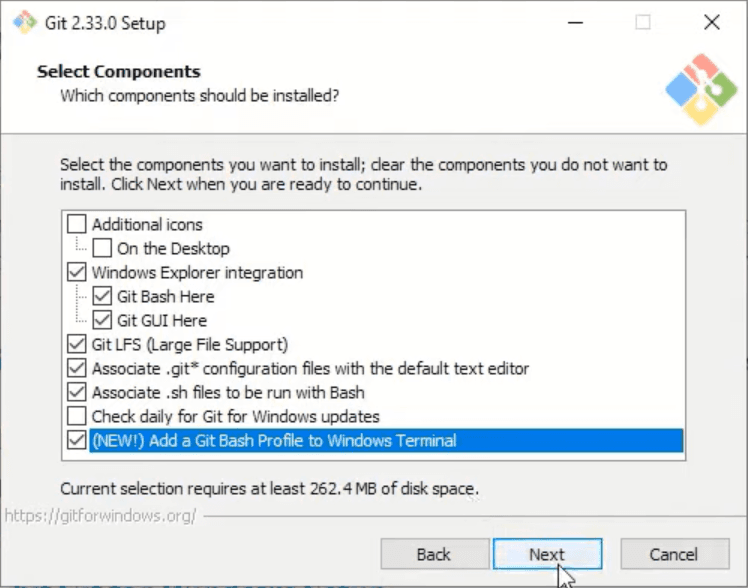
In the next two windows you can make changes if you want but I would suggest leaving everything like it is and clicking Next.
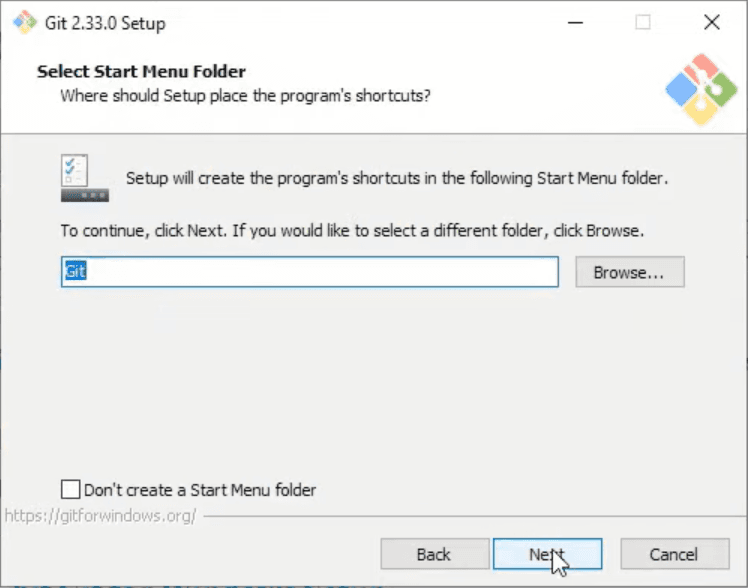
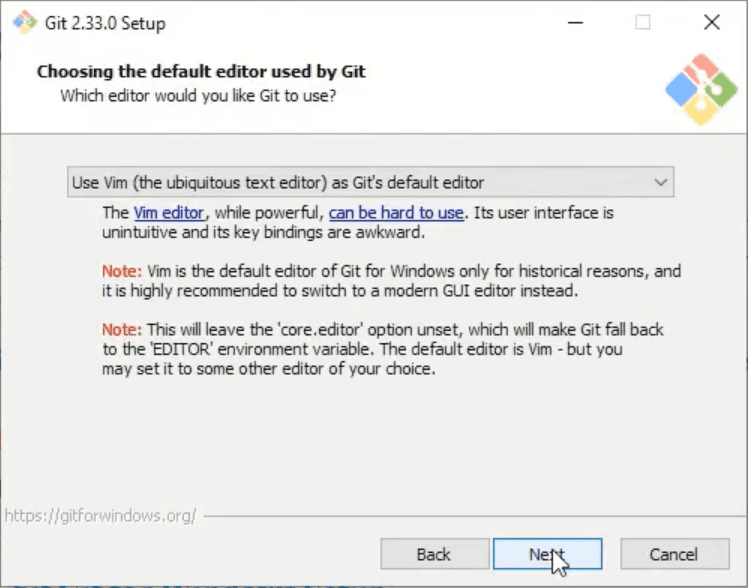
In this window select 'Override the default branch name for new repositories' and type 'main' in the input box. We do that because this is the new naming convention and everybody is encouraged to follow it. After making changes click Next.
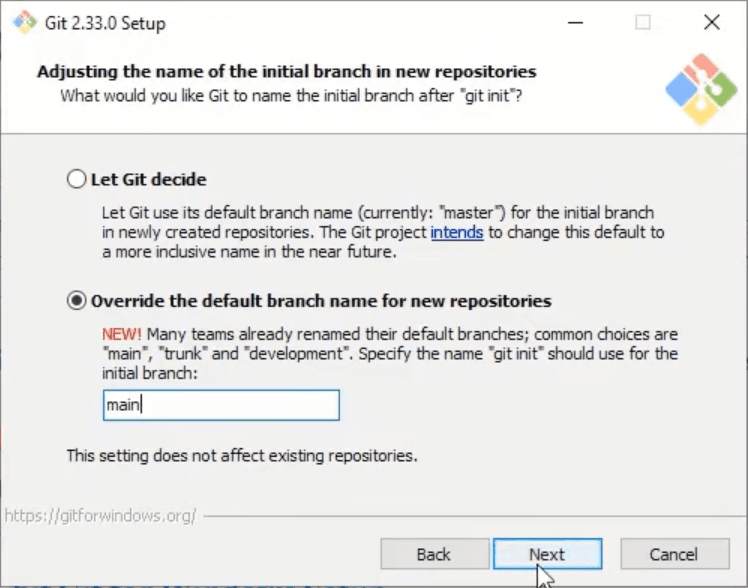
Next step is based solely on your preference, if you know what you are doing, then select whichever option you would like to, otherwise keep the default one and click Next.
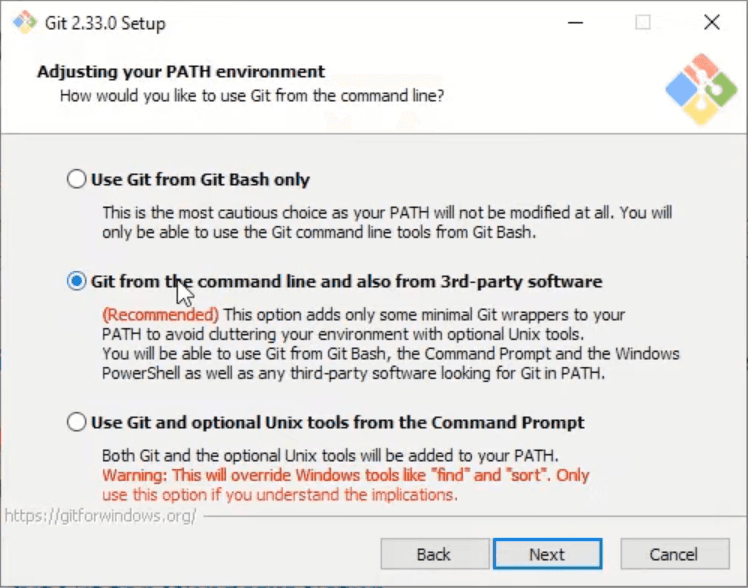
For the next few windows leave everything on default unless you know what you are doing.
Installing NodeJS
NodeJS is an open-source Javascript runtime environment that will help us run React Native applications. It also comes with npm which is a package manager that helps to install various packages in our applications.
To download NodeJS go to their website and select the LTS (long term support) version.
During the installation leave everything on default except for the window below. It is very important to tick this box in order to install necessary tools automatically, otherwise you will have to do that manually.
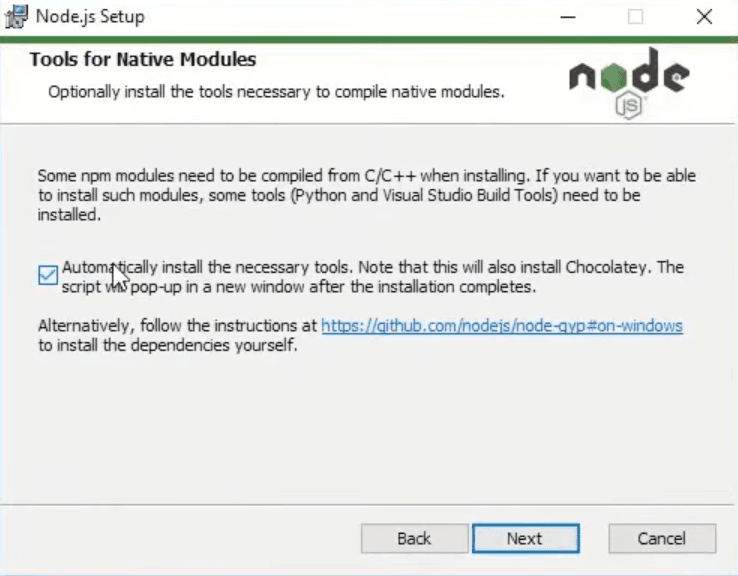
Once the installation is finished click Finish. That should automatically open terminal if you ticked the mentioned box above. In that terminal press any key to start the installation. Keep in mind that terminal will close automatically after installing everything. This step will take some time, so you can take a well deserved break and refill your coffee cup ☕.
To test if node was installed correctly open the terminal and type node --version, which should display the version that was installed. To test if npm was installed correctly type npm --version, which accordingly will display the npm version.
Installing Expo CLI
By this step we have already installed all of the dependencies that Expo needs. Now it's time to install Expo CLI itself!
To install Expo CLI, you simply have to open the terminal and type npm install --global expo-cli. That's it, it's that easy! On a side note, we need to add --global in order to install Expo CLI globally.
Now we can create our first React Native project!
Initialise Your First Project
In order to create a new Expo project, in the terminal we can simply type expo init. You will be asked a few questions in order to finalise the initialisation.
First of all, you will need to provide the name of your application. As it is our first application, let's name it 'my-first-app'.
After that, you will have to choose a template that you would like to use for your application. In this step you can choose whatever you like, but for demonstration purposes we chose blank template.
After answering these two simple questions Expo will install all dependencies and prepare your project.
To run the application you will have to type cd my-first-app in the terminal, which will go to your project's folder and then type npm start to start the development server.
You might be asked to allow access to NodeJS, allow it.

After allowing access, Expo will automatically open new browser window called Expo Developer Tools like in the image below. If it does, that means everything is installed correctly.
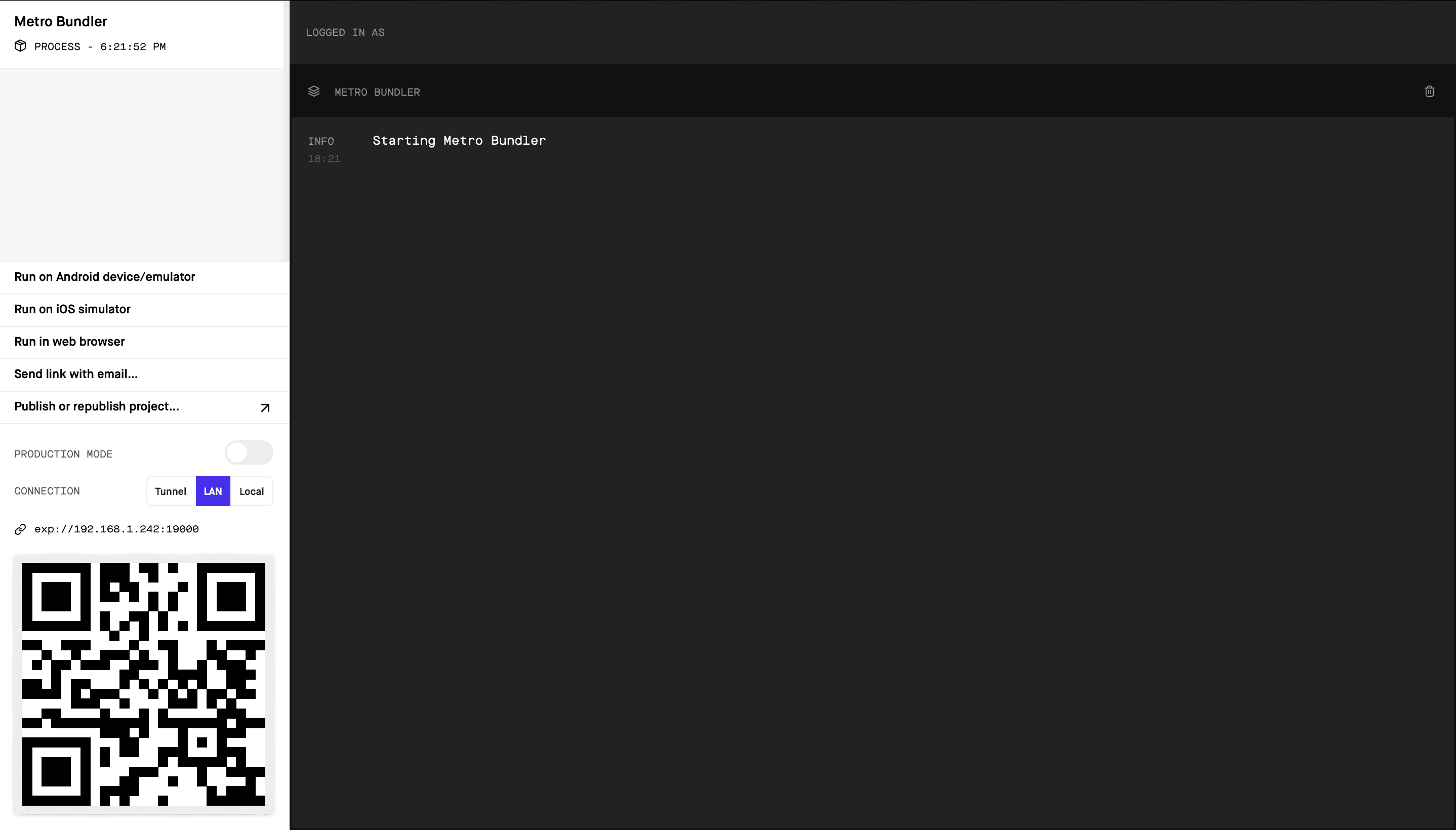
Running The Application
Now it's time to run the application on your device. But in order to do that, we still need a little bit of setting up.
First things first, if you don't have an Expo account yet, we should create one on their website.
After creating an Expo account, you should be able to login by typing expo login in the terminal and providing your username or email as well as password. If provided credentials were correct, you should see a success message.
You can also test if you have logged in successfully by typing expo whoami, which will display your username.
Setting Up Expo Go Mobile Client
Okay, now it will get a little bit more exciting. Grab your phone and install Expo Go application from the App Store or Google Play Store.
After installing the application, launch it, login with the account you have just created and launch the application that's located under RECENTLY IN DEVELOPMENT tab.
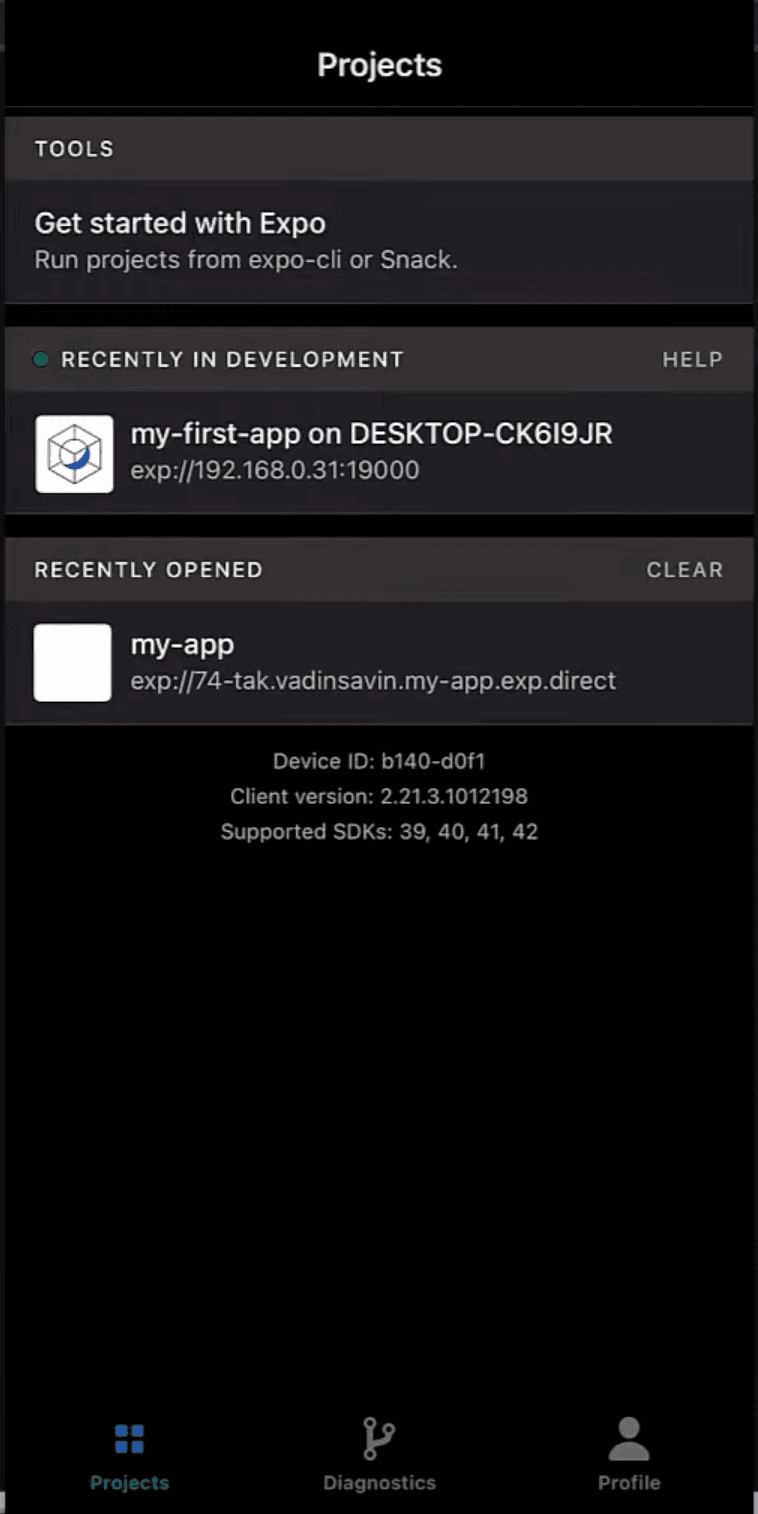
Now you should see in your Expo Developer Tools browser tab that it's building the Javascript bundle. After that, Expo Go will automatically launch your application on the device!!
You can also run the application on your phone by scanning the QR code in the terminal or Expo Developer Tools. On android phones you can scan the QR code directly from the Expo application. On the iOS however, you have to do that from the Camera app. This is especially useful when you are trying to run someone else's application.
Installing Visual Studio Code
There are plenty of IDE's to choose from and if you have one already, then you can skip this step and start writing your code there. But in our humble opinion, we think Visual Studio Code fits our needs the best.
If you decided to go with Visual Studio Code as well, then you can download it from their website.
During the installation, you can make changes if you know what you are doing, otherwise I suggest leaving everything on default except for the window below. In here, tick all of the boxes under Other tab.
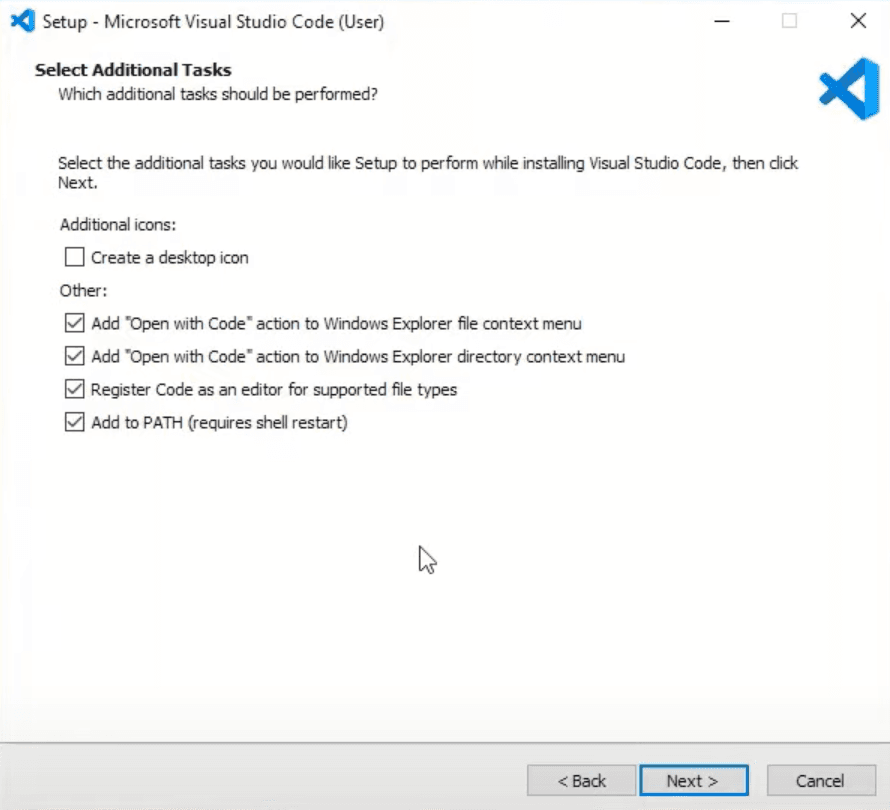
You might be asked to verify that you trust the authors of the files in this folder. Check the box 'Trust the authors of all files in the parent folder' and click Yes, I trust the authors button.
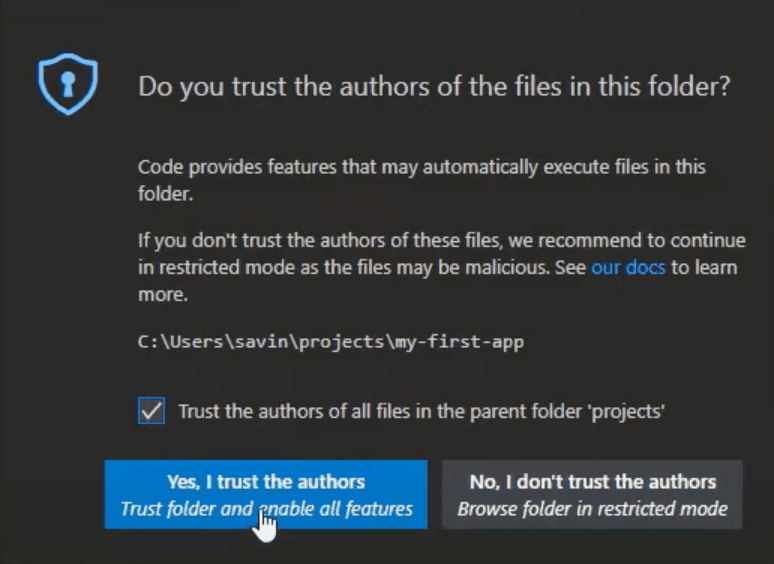
Now you can select the theme of Visual Studio Code that you prefer and run the project. Visual Studio Code has a lot of very useful extensions for React Native developers that will make you code faster, cleaner, prevent bugs and in general make coding a lot more enjoyable. If you want to see what are those extensions and learn how to add them to your Visual Studio Code.
To run the project, just open the terminal in Visual Studio Code by clicking CTRL + ` (that little button in the top left of your keyboard below the 'esc' button, you are welcome 😉) and just type npm start which will start the project and open Expo Developer Tools window in the browser.
Now you can start coding!!! 🥳
I hope this guide was clear, comprehensive, and helped you to easily install as well as setup everything that you need in order to start working on your first React Native application.
Good luck on your Computer Science journey!!
